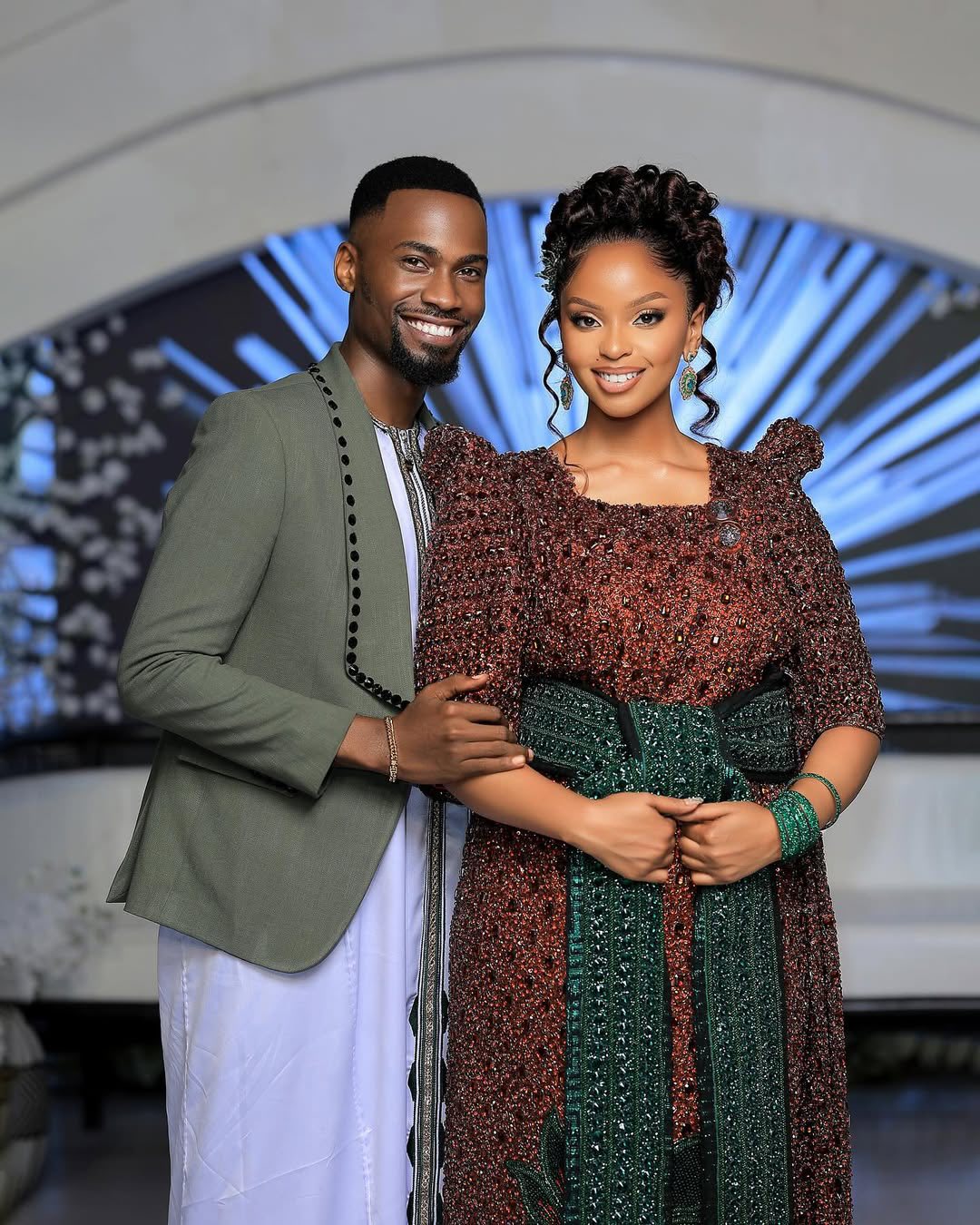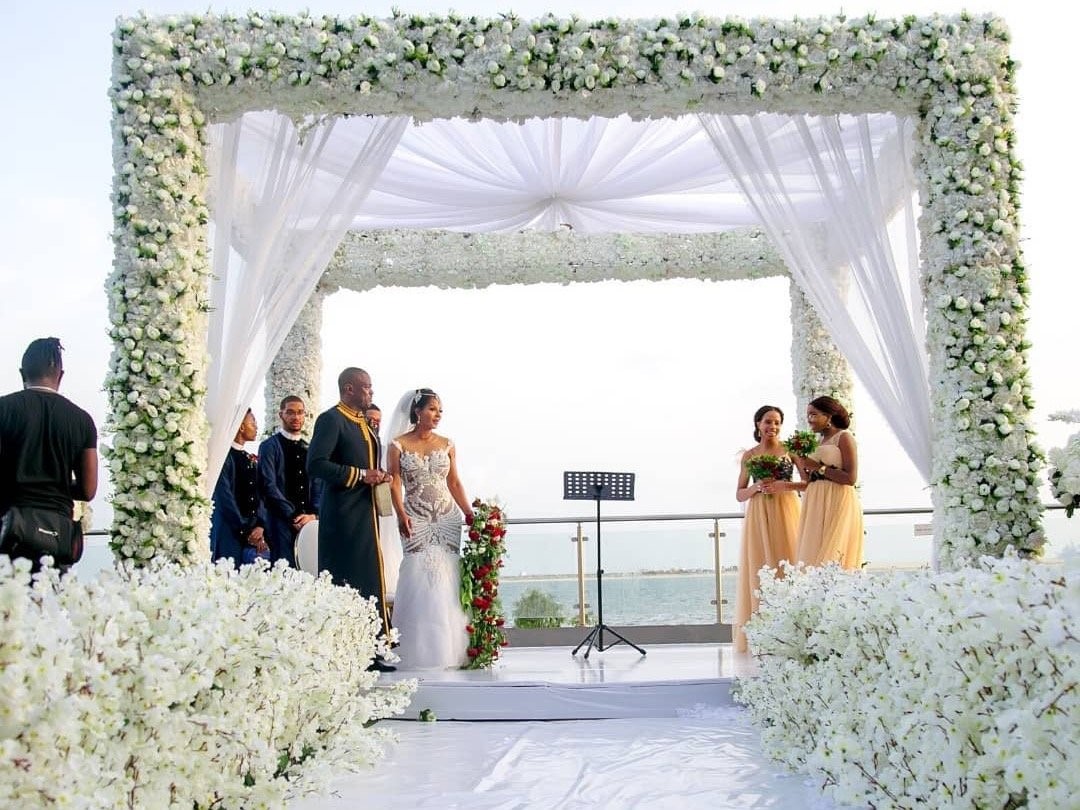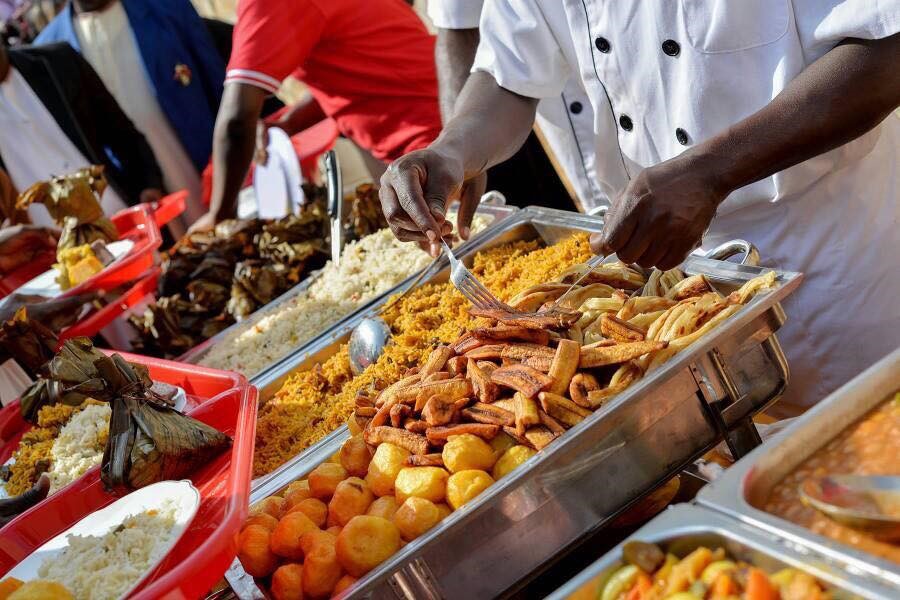The Heart of Kwanjula: More Than Just a Ceremony
When you think of a wedding, you probably first imagine a white dress, a church aisle, and a big reception. But in Uganda, one of the most significant and culturally rich events in the marriage process often happens long before the church vows: the Kwanjula, also known as "Introduction Ceremony." This isn't just a party; it's a deeply meaningful celebration that weaves two families together, not just two people.
At its core, Kwanjula is a formal meeting where the groom, accompanied by his family and friends, is officially introduced to the bride's family. It’s a moment of immense pride for the bride, who is formally presenting the man she has chosen to her parents, uncles, and aunts. The air is thick with anticipation and respect as traditions are meticulously followed, often led by a spokesperson (omwogezi) who navigates the delicate, eloquent exchange between the two families.
The ceremony is a beautiful showcase of culture. The bride makes several entrances, each time in a different traditional outfit, displaying her heritage with grace and elegance. The groom’s family, known as the "Bako," arrives bearing gifts (bride price)—a symbolic gesture of their gratitude for the family that raised their future daughter-in-law. These gifts, which can range from livestock and food to modern items, are a powerful way to honor and thank the bride’s parents.
The Day of the Kwanjula
The Kwanjula day typically held at the bride's family home is quite eventful and starts with the arrival of the Groom's Party. The groom arrives with a large entourage of family members (but traditionally not his parents) and friends, dressed impeccably, with the men wearing Kanzus (long white tunics) and suits/jackets, or gandura, a long, flowing robe, often worn over a tunic and pants, with a tied belt or scarf at the waist and the women often wearing traditional dresses ranging from gomesi, mishanana and busuti.
They wait outside, asking for permission to enter. The groom's spokesman also known as Muko or Omwogezi presents their request to the hosts' spokesman.
Once permission is granted, they are joyfully adorned with a corsage and escorted to their designated seating area.
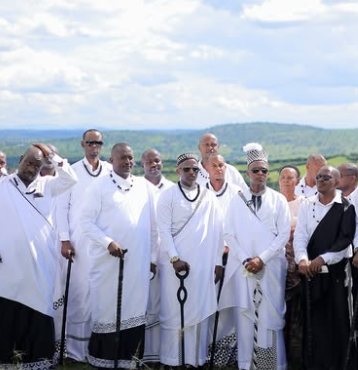
The event is conducted and coordinated in a local language and managed by spokesmen on both sides and overseen by the Ssenga who is the bride's aunt. The groom's party introduces themselves, stating their purpose for visiting, which is usually described as coming to "bring food" (*Okuleeta Emmere*) or "ask for a gift" (the bride) while the bride's family introduction is often led by the groom's official brother-in-law(Omuko).
Identification of the Couple
Identifying the Bride: A line of women, including the bride, dressed similarly to obscure her identity, parades out. The groom is asked to identify the woman he came for. When he points her out, his sister gives the bride a flower. This is followed by great celebration and ululations. The bride then retires back into the house for her costume changes.
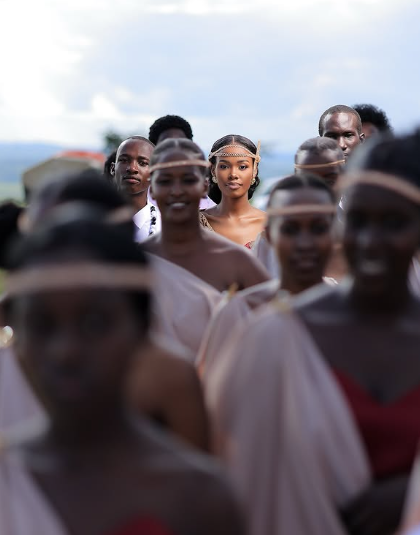
Identifying the Groom: The Ssenga then dances through the visiting party to find the groom who has often been sitting hidden among his group. Once identified, she escorts him to a special seat.
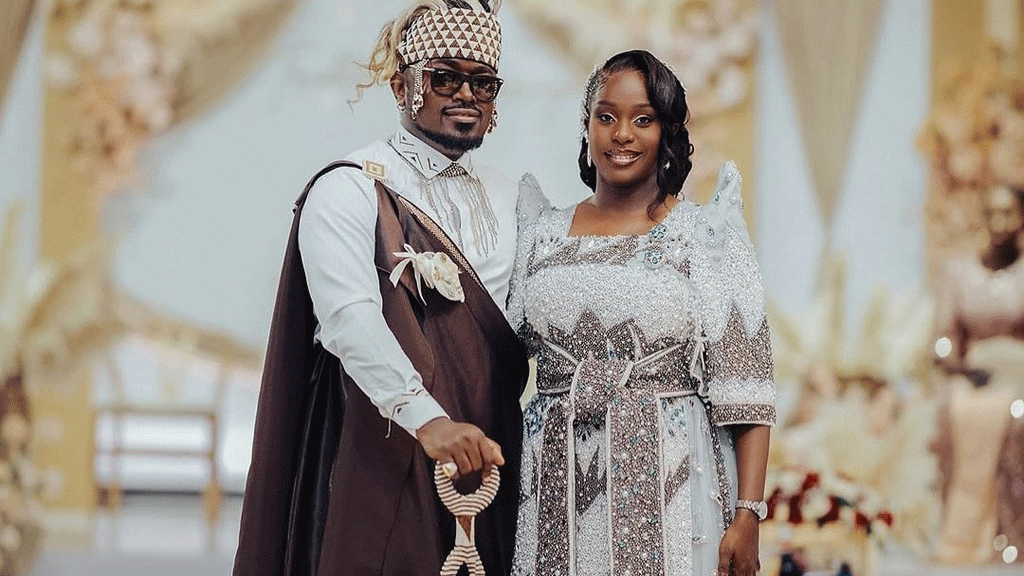
Presentation and Acceptance of Gifts
The gifts brought by the groom's side are presented. These are often numerous, including items for the father-in-law (e.g., a Kanzu), the mother-in-law (a Gomesi), household goods (sugar, cooking oil, soap), and a cock for the brother-in-law (*Enkoko y'Omuko*).
The host's spokesman formally asks the bride and the Ssenga if they accept the gifts. Upon their "Yes," there is more cheering, symbolizing the acceptance of the groom's entry into the family.
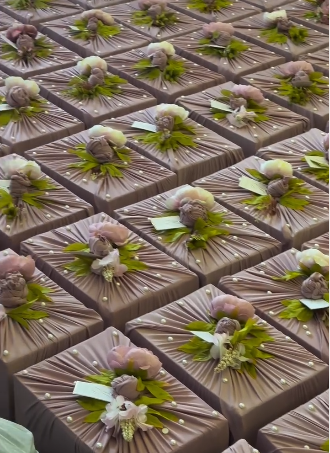
The Bride's Appearance and Exchange of Tokens
The bride makes several grand entrances, each time wearing a new, elaborate traditional outfit, often the Gomesi, which is usually one of the gifts provided by the groom.
She presents a Kabo ka Muwala, a small gift basket to her groom, which may contain fruits, chocolates, wine or anything she thinks her groom will love.
* **The Coffee Berries:** A key symbolic ritual is the sharing of **coffee berries** (*Emwanyi*). Both families chew and swallow these berries, signifying that they are now "one blood" and have become a unified family.
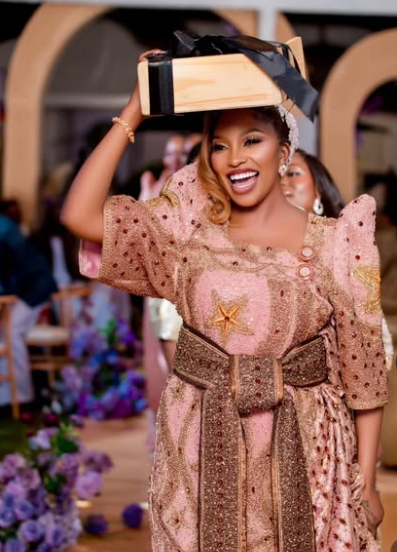
The Finale
Rings and Cake: The ceremony concludes with the exchange of rings between the couple and the cutting of a cake.
Feasting and Celebration: The rest of the day is spent feasting, dancing, and celebrating, with the newly joined families enjoying a special meal together.
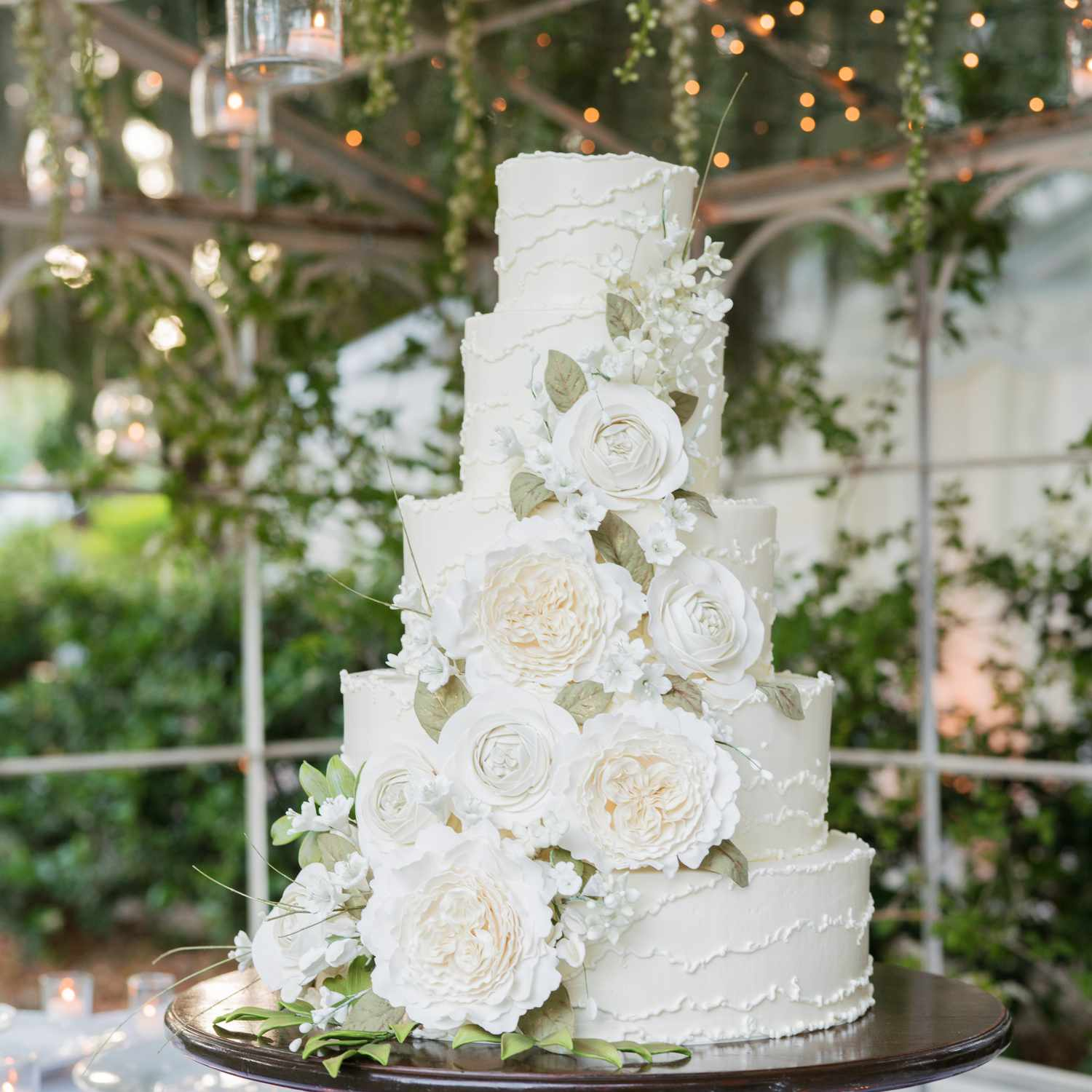
But beyond the colorful attire and the symbolic gifts, the true essence of Kwanjula is the bond it forges. It is a moment of shared history, where proverbs are exchanged, blessings are given, and a new family is officially welcomed. It is a time for the two sides to truly get to know one another, to build a foundation of mutual respect that will support the new couple for years to come.
In a world where traditions can often feel lost, the Kwanjula stands as a vibrant testament to the enduring power of family, community, and the timeless act of coming together.


